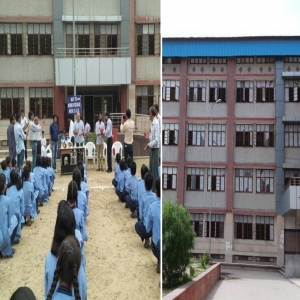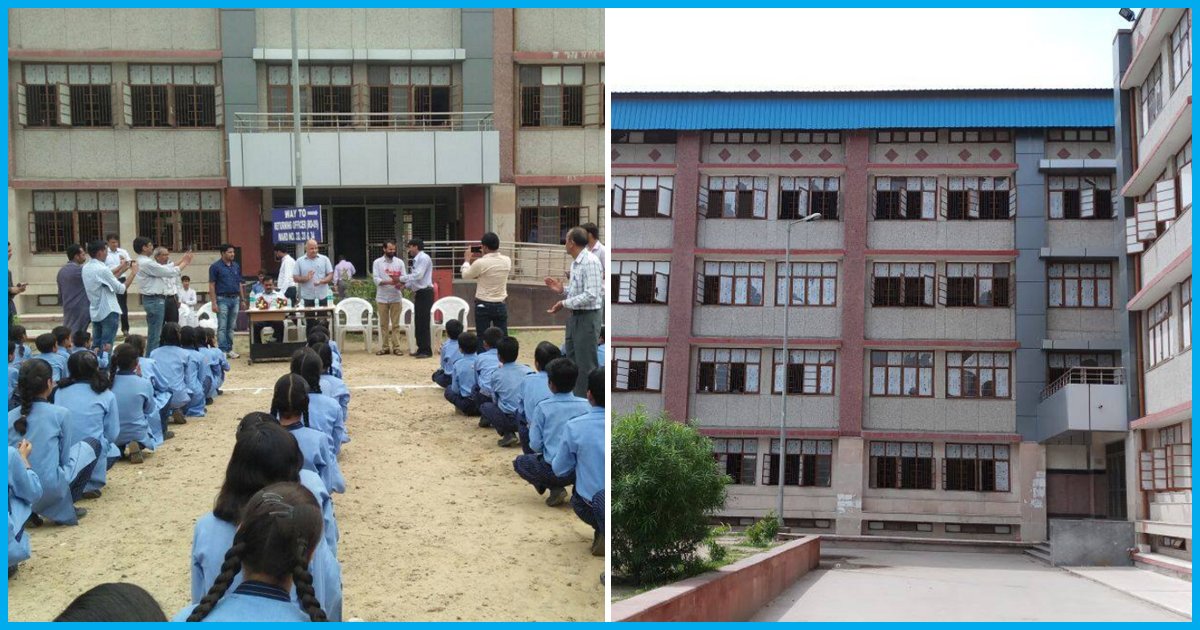
.png) Jaswant Kaur
Jaswant Kaur

If one looks at the Indian education system, one often tends to compare the widening gap between private and public schools. Several studies conducted by eminent organisations have not shied away from writing that the quality of education in government schools has only deteriorated over the years. Not only that, more and more people are interested in enrolling their wards in private schools, despite the costs involved.
A study conducted by Azim Premji University reveals that private schools have made remarkable progress over the last few years, while government schools have remained stagnant in terms of infrastructure, availability of teachers, and attendance. The report shows that only 10 percent of government schools possess adequate infrastructure compared to 70 percent of private schools. Only 20 percent of government school teachers have adequate qualifications compared to 80 percent of their counterparts in private schools.
The average attendance rate in private schools is around 80 percent, while government schools struggle with a mere 50 percent attendance rate. Besides, the report shows a huge gap when it comes to access to technology, with nearly 60 percent of private schools having computers and internet connectivity, in stark contrast to just 20 percent of government schools.
However, this does not mean that public schools are not needed. Even today, more than 70 percent of children, especially in rural regions, can only access education through government and government-aided schools. These schools act as the lifeline of our education system, as schemes like mid-day meals and free access to textbooks and uniforms further reduce the financial burden of education, especially for families coming from economically and socially backward sections of society. Simply put, the private sector alone cannot cater to the educational needs of more than 26.5 crore children in this country.
Yet, as a country, we tend to ignore government schools. The union budget for education has been reduced consecutively over the last few years. Many times, teachers posted in government schools are seen raising funds from local people (as if other administrative jobs are not enough), especially in villages, for upgrading school infrastructure. Resources are often mobilised through school alumni who are doing well in life.
Schools close to the vicinity of a few corporate houses certainly get some aid from them in the form of Corporate Social Responsibility. In fact, it has been observed that a few government schools get extraordinary support with multiple corporates adopting one school. However, only a few initiatives have actually led to improvements in quality education for reasons like inadequate staffing, higher pupil-to-teacher ratios, and a higher burden of administrative tasks rather than a focus on direct teaching.
Needless to say, the learning outcomes of children studying in government schools are way below age-appropriate levels. Various state governments have been announcing various schemes to bridge this gap with a few hits and misses. The results of the National Achievement Survey show that average learning achievement across all grades and subjects dropped from 58% in 2017 to 54% in 2021. The pandemic might have played a role, as several studies reported a regression in learning outcomes due to the sudden closure of schools.
However, there has not been much change even after the pandemic, as is evident from other reports like the Annual Status of Education Report published by eminent NGOs like Pratham. Now the question is, what could be the solution? One issue that has become evident over the years is the lack of political will to overhaul the education system. Finances have often been a constraint, be it at the state level or the central level.
A few experiments like Sarva Shiksha Abhiyan have been successful in achieving universal access to education to an extent. The program achieved great results in some areas in terms of increased enrolments, reducing dropouts, and even improving learning outcomes. The program was renamed as Samagra Shiksha Abhiyan (SSA) by the NDA government in 2018 with an aim to “give flexibility to the states and UTs to prioritise their interventions.” However, the so-called flexibility and federalism often remain on paper.
It is not new to see state governments complaining about interference by the union government in state affairs, especially those not governed by the ruling party. The tradition has continued without any changes, putting the interests of millions of children at stake.
The SSA was launched with the core purpose of unifying and streamlining efforts to provide quality education to all children across the country. The program integrated three major schemes: the Sarva Shiksha Abhiyan, the Rashtriya Madhyamik Shiksha Abhiyan, and the Teacher Education (TE) program. The program implementation was slated to be done in a partnership mode, with the Centre contributing a major chunk of financial outlay.
State governments were asked to implement the project in line with the guidelines, which required them to hire staff on a project basis rather than permanently. The focus has been on imparting quality education, developing school infrastructure, including digital resources, and promoting diversity and inclusion.
Recently, the government also launched a scheme called Pradhan Mantri Schools for Rising India (PM-SHRI) Scheme in 2022, which aims at transforming 14,500 government schools into exemplary institutions with an outlay of Rs. 27,000 crore over five years. The scheme required the state governments to sign an MoU with the Union government with a financial commitment of 60 percent.
While SSA aimed at investment in the education budget of the state governments, PM-SHRI aims at identifying these schools through a challenge mode, where schools meeting specified criteria can apply online. The major eligibility criterion is that schools located in urban areas must score at least 70 percent on certain quality parameters and 60 percent for rural schools. In other words, both schemes are entirely different in purpose.
Ever since the launch of PM-SHRI, there has been a political stalemate, especially in non-BJP ruled states, which have shown their reluctance to sign the MoU. The differences have increased to an extent that the Union Education Ministry has stopped funds under SSA to Delhi, Punjab, and West Bengal!
The AAP government claims that they already run a similar initiative, while the West Bengal government has objected to prefixing PM-SHRI to the names of its schools on the contention that the Union government will “take all the credit” despite the fact that the state government shall bear 40 percent of the project cost.
As a result, SSA funds amounting to Rs. 330 crore, 515 crore, and Rs. 1,000 crore have not been released to Delhi, Punjab, and West Bengal respectively. No one would have thought that the interests of political parties would be larger than those of the children for whom these schemes were announced.
While the impact of the PM-SHRI scheme or SSA is yet to be seen, the political bickering has already started affecting students as teachers have not been paid salaries in these states for several months. Will these teachers take interest in delivering classes if they are not paid on time? Not only this, but children will also not be able to get access to free textbooks and school uniforms. Who will be held responsible if these children go back to the streets to make a living? It will undo the progress that SSA has achieved all these years.
Also, the money lying in the exchequer’s account is meant for general good, contributed by the general public in the form of taxes and other means. The governments, be it at the Centre or the state level, do not have any right to play with the future of children. The right to education is fundamental to the growth of our children and this nation. It should be upheld in all circumstances.
The writer, a company secretary, can be reached at Jassi.rai@gmail.com